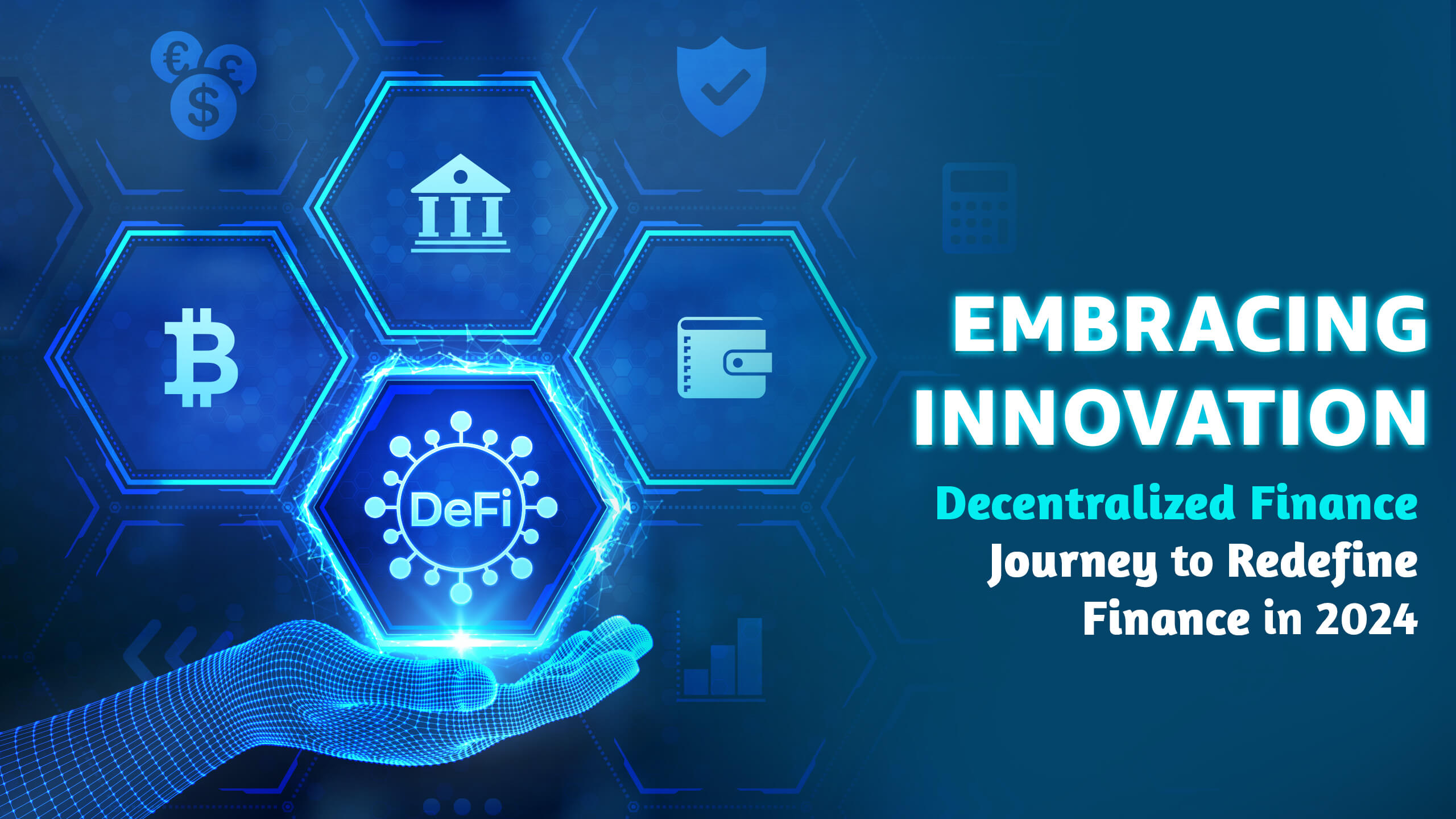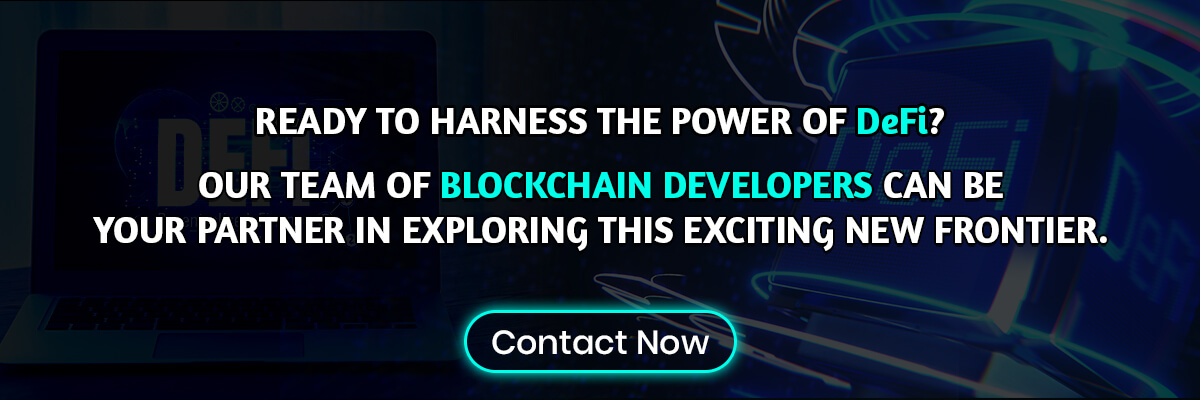Introduction
Explanation of Decentralized Finance (DeFi)
Decentralized Finance (DeFi) refers to an emerging financial ecosystem built on blockchain technology. It aims to provide traditional financial services like lending, borrowing, trading, and asset management in a peer-to-peer manner, bypassing the need for centralized institutions like banks and brokers. This is achieved through the use of smart contracts, self-executing code that automates financial agreements on the blockchain.
DeFi in the Evolving Financial Landscape
Increased transparency and trust: Transactions are recorded publicly on the blockchain, fostering greater accountability.
Enhanced accessibility: DeFi services are generally permissionless, meaning anyone with an internet connection can participate.
Reduced reliance on intermediaries: DeFi eliminates the need for third-party involvement, potentially lowering transaction costs and increasing efficiency.
Understanding DeFi is crucial for staying informed about the future of finance. As the technology matures, it has the potential to disrupt traditional financial systems and reshape how individuals interact with financial services.
What is DeFi?
Definition of DeFi and Its Core Principles
DeFi can be understood as a global, permissionless financial system built on top of blockchain technology. Unlike traditional finance (CeFi) which relies on central authorities, DeFi operates on the following core principles:
- Decentralization: Removes the need for intermediaries like banks or financial institutions. Transactions are facilitated directly between individuals through smart contracts.
- Transparency: All transactions are publicly recorded and verifiable on the blockchain, ensuring greater accountability and trust.
- Permissionless: Anyone with an internet connection can access and participate in DeFi protocols without restrictions.
- Open-source: The underlying code of DeFi applications is often publicly available, allowing for community scrutiny and fostering innovation.
Historical Context and Evolution of Decentralized Finance
The concept of DeFi emerged alongside the rise of blockchain technology and cryptocurrencies like Bitcoin. Early examples include peer-to-peer lending platforms built on the Bitcoin blockchain. However, the development of smart contracts on Ethereum in 2015 significantly accelerated the growth of DeFi.
Smart contracts are self-executing programs stored on the blockchain. They enable the creation of Decentralized Applications (dApps) that can automate various financial services without the need for trusted third parties.
Key Characteristics of DeFi Platforms
DeFi platforms offer a wide range of financial services, including:
- Lending and borrowing: Users can deposit their cryptocurrency holdings to earn interest or borrow funds against them.
- Decentralized exchanges (DEXs): Allow peer-to-peer trading of cryptocurrencies without the need for a centralized intermediary.
- Yield farming: A strategy where users lend their crypto assets to liquidity pools on DeFi platforms to earn rewards.
- Derivatives trading: Enables users to speculate on the price movements of various assets using financial instruments like options and futures.
Decentralization in DeFi
Definition and Significance of Decentralization
Decentralization is the cornerstone of DeFi, fundamentally transforming how financial transactions occur. In traditional finance (CeFi), central institutions like banks act as intermediaries, controlling access to financial services and overseeing transactions.
DeFi disrupts this model by:
- Eliminating central authorities: Smart contracts govern transactions on the blockchain, removing the need for trusted third parties.
- Distributing control: No single entity controls the DeFi ecosystem, fostering a more democratic and transparent financial system.
- Increased security: Data is spread across a vast network of computers, making it highly resistant to censorship and manipulation.
Comparison with Centralized Finance (CeFi)
| Feature | Decentralized Finance (DeFi) | Centralized Finance (CeFi) |
| Intermediaries | None | Banks, brokers, exchanges |
| Transaction Processing | Self-executing smart contracts | Manual verification and approval by institutions |
| Transparency | All transactions publicly recorded on the blockchain | Limited transparency, information controlled by institutions |
| Accessibility | Permissionless, open to anyone with an internet connection | May require credit checks or eligibility criteria |
| Control | Distributed across the network | Centralized control by institutions |
How Decentralization Fosters Trust and Resilience in the Financial System
Decentralization in DeFi offers several advantages:
- Reduced risk of a single point of failure: No single entity can manipulate the system or control user funds.
- Enhanced censorship resistance: Transactions cannot be blocked or altered by any individual or group.
- Increased trust: Transparency through publicly recorded transactions builds trust and accountability.
However, it’s crucial to acknowledge that the nascent stage of DeFi also presents challenges:
- Potential for code vulnerabilities: Smart contracts are susceptible to errors or exploits, which can lead to financial losses.
- Lack of regulatory oversight: The decentralized nature of DeFi makes it challenging to implement regulations and consumer protection measures.
Transparency in DeFi
Importance of Transparency in Financial Transactions
Transparency is fundamental to building trust and ensuring fair play in any financial system. In traditional finance (CeFi), opacity often surrounds complex financial products and hidden fees, making it difficult for individuals to make informed decisions.
DeFi aims to address these concerns by prioritizing transparency:
- Publicly recorded transactions: All transactions on DeFi platforms are recorded permanently and immutably on the blockchain. This provides a public ledger accessible to anyone, fostering greater accountability.
- Open-source code: The underlying code of many DeFi applications is publicly available, allowing for community scrutiny and independent verification. This level of openness helps identify potential vulnerabilities and fosters trust in the system.
Role of Blockchain Technology in Ensuring Transparency
Blockchain technology plays a critical role in enabling transparency within DeFi:
- Distributed ledger: Transactions are recorded on a shared ledger accessible to all participants, creating a verifiable and immutable record of activity.
- Cryptographic hashing: Each transaction is cryptographically secured, making it virtually impossible to alter or tamper with data.
Examples of Transparent Practices in DeFi Protocols
Several features of DeFi protocols promote transparency:
- On-chain data analysis: Blockchain explorers allow anyone to view historical transaction data and analyze the activity of DeFi protocols.
- Community forums and communication: Many DeFi projects maintain active online communities where developers and users can discuss protocol updates and potential issues.
- Security audits: Reputable DeFi protocols often undergo security audits by independent firms to identify and address potential vulnerabilities in their code.
However, it’s important to remember that:
- Complexity of DeFi applications: Understanding the technical intricacies of DeFi protocols can be challenging for new users.
- Potential for misleading information: Not all DeFi projects prioritize transparency. Thorough research and due diligence are crucial before interacting with any DeFi protocol.
Accessibility in DeFi
Overview of Accessibility Challenges in Traditional Finance
Traditional financial systems often present significant barriers to entry for many individuals. These challenges include:
- Limited access to physical branches: Individuals in remote areas may lack access to bank branches or financial institutions.
- High account minimums: Opening a traditional bank account may require maintaining a minimum balance, which can be unaffordable for low-income individuals.
- Complex application processes: Opening an account or applying for financial products can involve lengthy paperwork and stringent eligibility criteria.
- Exclusion of the unbanked population: An estimated 1.7 billion adults globally remain unbanked, lacking access to basic financial services.
How DeFi Platforms Provide Financial Inclusion to Underserved Populations
DeFi offers the potential to revolutionize financial accessibility by:
- Permissionless access: Anyone with an internet connection and a digital wallet can participate in DeFi protocols, regardless of their location or socioeconomic status.
- Lower barriers to entry: DeFi platforms often have minimal or no account opening fees, making them accessible to individuals who may not qualify for traditional bank accounts.
- Fractional investment: DeFi allows users to invest in fractions of assets, enabling participation even with limited capital.
- Microloans and micro-savings: DeFi protocols can facilitate peer-to-peer lending and borrowing in smaller amounts, catering to the needs of underserved communities.
Discussion on the Global Reach of DeFi and Its Impact on Financial Inclusion
DeFi transcends geographical limitations:
- Borderless access: Anyone with an internet connection can participate in DeFi, regardless of their nationality or geographical location.
- Financial empowerment in developing economies: DeFi offers the potential to provide financial services to individuals in regions with limited access to traditional banking infrastructure.
- Promoting financial literacy: The growth of DeFi necessitates increased financial education to ensure individuals can make informed decisions while engaging with these platforms.
Differences between DeFi and Traditional Finance
Overview of Traditional Financial Systems
Traditional finance (CeFi) refers to the established financial system that relies on centralized institutions like banks, brokerage firms, and other intermediaries. These institutions act as gatekeepers, controlling access to financial services and overseeing financial transactions.
Benefits and Drawbacks of Both Systems
DeFi:
- Benefits: Transparency, accessibility, potential for lower fees, permissionless access.
- Drawbacks: Vulnerability to code exploits, lack of regulatory oversight, complexity for new users.
CeFi:
- Benefits: Established infrastructure, user protection through regulations, and familiarity for most users.
- Drawbacks: Limited accessibility, potential for high fees, lack of transparency in certain aspects.
Choosing between DeFi and CeFi depends on individual needs and risk tolerance. DeFi offers greater potential for innovation and accessibility, but users need to be aware of the associated risks and the technical complexities involved. CeFi provides a familiar and regulated environment but may have limitations in terms of transparency and accessibility.
Conclusion
Decentralized Finance (DeFi) presents a paradigm shift in the financial landscape. By leveraging blockchain technology and smart contracts, DeFi fosters a more transparent, accessible, and potentially lower-cost financial system. While DeFi offers exciting possibilities, it’s crucial to acknowledge the nascent stage of this technology. Challenges like potential vulnerabilities in code and the lack of comprehensive regulations require careful consideration.





